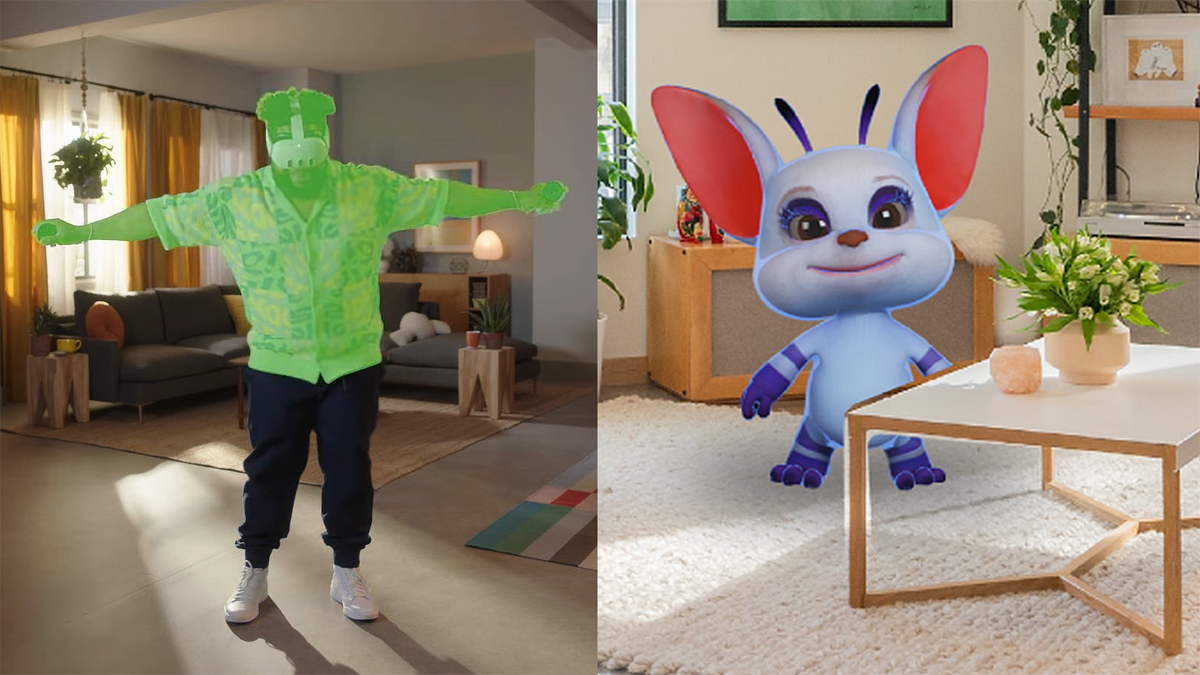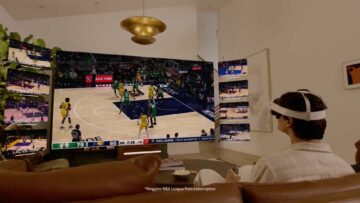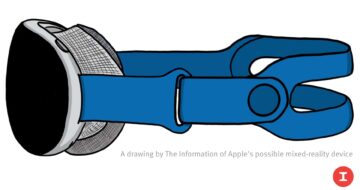Virtual Desktop’s latest update lets you use Quest 3’s Inside-Out Body Tracking and Generative Legs to emulate worn Vive Trackers for SteamVR body tracking.
Vive Trackers are mainly used by VRChat users to track body parts such as their torso, elbows, legs, and feet to drive their avatar in real-time. But this incurs a significant added cost. The traditional Vive Trackers cost $130 each and require SteamVR Tracking base stations ($150 each) while the inside-out Vive Ultimate Trackers cost $200 each – and both require $40-$50 straps too. Further, using traditional Vive Trackers with headsets that don’t use SteamVR Tracking requires a manual calibration process, as does using Vive Ultimate Trackers with headsets other than HTC Vive standalone headsets.
Quest 3 Now Has Inside-Out Body Tracking & MR Occlusion
Quest 3 inside-out upper body tracking is now available, and mixed reality occlusion can now be shipped in apps.

Virtual Desktop’s latest update on Meta Quest headsets, out now, can instead give you emulated Vive Trackers for your entire body.
To drive the positions of the upper body emulated trackers, on Quest 3 the update leverages the Inside-Out Body Tracking (IOBT) feature the headset got in December, which uses the headset’s downwards-facing side cameras. On older Quest headsets it will simply use inverse kinematics (IK), a mathematical estimation based on your head and hand positions.
For the lower body emulated trackers Virtual Desktop uses Meta’s Generative Legs feature, which Meta says uses a “cutting edge” AI model to estimate your legs positions. Generative Legs supports Quest 2, Quest Pro, and Quest 3.
VR enthusiast Luna testing Virtual Desktop’s Vive Tracker emulation on Quest 3.
You can configure which trackers are enabled and which aren’t using a community-made tool. This lets you, for example, use Quest 3’s IOBT for the upper body and real Vive Trackers for the lower body, giving you true 6DoF body tracking at the lowest possible cost.
VR enthusiast Luna using Virtual Desktop emulated Vive Trackers for their upper body combined with real Vive Ultimate Trackers on their lower body.
And emulated Vive Trackers isn’t the only new feature in this Virtual Desktop update. It also adds the ability to emulate Valve Index controllers using Quest’s controller-free hand tracking, enabling finger tracking in SteamVR games which support it.
Finally, the update brings the following bug fixes and general improvements:
• Improved motion extrapolation quality of Synchronous Spacewarp (SSW) for all headsets
• Now sending headset battery level and charging state to SteamVR
• Reduced video compression artifacts with 10-bit codecs
• Improved desktop streaming latency on macOS
• Added Wide motion support with hand tracking on Quest
• Switched to recognizing index and finger curl for trigger / grip presses when using regular hand tracking
• Fixed issue with Unreal/Unity/WebXR where the VR session wasn’t ending properly
• Fixed desktop being cutoff on some resolutions with AMD
• Fixed game compatibility with: Hard Bullet, Resonite, JKXR, Roblox
While Valve’s Steam Link these days offers a free and frictionless gateway to SteamVR and Meta recently significantly improved Air Link’s session battery life, Virtual Desktop’s developer Guy Godin continues to push the bounds and add new features and improvements you won’t find on either of the free alternatives, making his $20 app still the wireless PC VR tool of choice for many Quest owners.
- SEO Powered Content & PR Distribution. Get Amplified Today.
- PlatoData.Network Vertical Generative Ai. Empower Yourself. Access Here.
- PlatoAiStream. Web3 Intelligence. Knowledge Amplified. Access Here.
- PlatoESG. Carbon, CleanTech, Energy, Environment, Solar, Waste Management. Access Here.
- PlatoHealth. Biotech and Clinical Trials Intelligence. Access Here.
- Source: https://www.uploadvr.com/virtual-desktop-quest-3-inside-out-body-tracking-vive-tracker-emulation/
- :has
- :is
- :where
- 1
- 2%
- 36
- a
- ability
- add
- added
- Adds
- AI
- AIR
- Air Link
- All
- also
- alternatives
- and
- apps
- ARE
- AS
- At
- available
- avatar
- base
- based
- battery
- BE
- being
- body
- Body Tracking
- both
- bounds
- Brings
- Bug
- but
- by
- cameras
- CAN
- charging
- choice
- COM
- combined
- compatibility
- continues
- Cost
- cutting
- Days
- December
- desktop
- Developer
- does
- don
- drive
- each
- Edge
- either
- enabled
- enabling
- ending
- enthusiast
- Entire
- estimate
- Ether (ETH)
- example
- Feature
- Features
- Feet
- Find
- finger
- fixed
- fixes
- following
- For
- Free
- frictionless
- further
- game
- Games
- gateway
- General
- generative
- Give
- Giving
- got
- Guy
- hand
- hand tracking
- Hard
- head
- Headset
- headsets
- HTC
- htc vive
- htc vive standalone
- HTTPS
- improved
- improvements
- in
- index
- instead
- inverse
- isn
- issue
- IT
- jpg
- Latency
- latest
- legs
- Lets
- Level
- leverages
- LINK
- lower
- lowest
- mainly
- Making
- manual
- many
- mathematical
- Meta
- Meta Quest
- mixed
- mixed reality
- model
- motion
- mr
- New
- new feature
- New Features
- now
- of
- Offers
- older
- on
- only
- Other
- out
- owners
- parts
- PC
- pc vr
- plato
- Plato Data Intelligence
- PlatoData
- positions
- possible
- Pro
- process
- Push
- quality
- quest
- quest 2
- quest 3
- quest pro
- real
- real-time
- Reality
- recently
- recognizing
- Reduced
- regular
- require
- requires
- s
- says
- sending
- session
- shipped
- side
- significant
- simply
- some
- standalone
- State
- Stations
- Steam
- SteamVR
- Still
- streaming
- such
- support
- Supports
- switched
- T
- Testing
- than
- that
- The
- their
- These
- this
- to
- too
- tool
- track
- tracker
- Trackers
- Tracking
- traditional
- trigger
- true
- ultimate
- Update
- UploadVR
- use
- used
- users
- uses
- using
- valve
- valve index
- Video
- Virtual
- virtual desktop
- vive
- vr
- vrchat
- wasn
- when
- which
- while
- wide
- will
- wireless
- with
- Won
- you
- Your
- zephyrnet










